Table of Contents

Thai street food is one of the most iconic culinary experiences in the world. It is not only a staple of daily life in Thailand but also a major draw for food-loving tourists. From bustling night markets in Bangkok to quiet alleys in Chiang Mai, the country offers an incredible variety of flavors, aromas, and textures that reflect its rich culture and traditions.
Thai street food is more than just convenient—it’s a celebration of local ingredients, age-old recipes, and regional diversity. It connects people from all walks of life, whether you’re grabbing a quick lunch, indulging in a midnight snack, or discovering new dishes as a traveler. As a result, many foodies across the globe view Thai street food as a must-experience adventure.
The allure of Thai street food lies in its accessibility and authenticity. You don’t need to book a table or spend a fortune; some of the most unforgettable meals are served from simple carts or open-air stalls. Vendors often specialize in one or two dishes perfected over years, even generations. This focus leads to unmatched quality and taste.
Thai street food culture is fast-paced, vibrant, and always evolving. From grilled skewers and spicy salads to sweet treats and savory soups, the variety is endless. Understanding Thai street food means appreciating the culinary heritage and the vibrant community that keeps it alive. It also means identifying the best street food in Thailand, whether it’s legendary Pad Thai, smoky grilled chicken, or creamy mango sticky rice.
For first-time visitors, navigating the street food scene might feel overwhelming. With so many choices and unique flavors, where do you begin? That’s where this guide comes in. We’ll take you through everything you need to know about Thai street food—its history, where to find it, how to enjoy it safely, and of course, a curated list of the best street food in Thailand.
Our goal is to help you enjoy this incredible part of Thai culture to the fullest. Whether you’re a backpacker on a budget, a digital nomad, or a luxury traveler with an adventurous palate, Thai street food has something for everyone. And once you experience the bustling streets filled with sizzling woks, fragrant herbs, and welcoming smiles, you’ll understand why so many people fall in love with Thailand’s culinary soul.
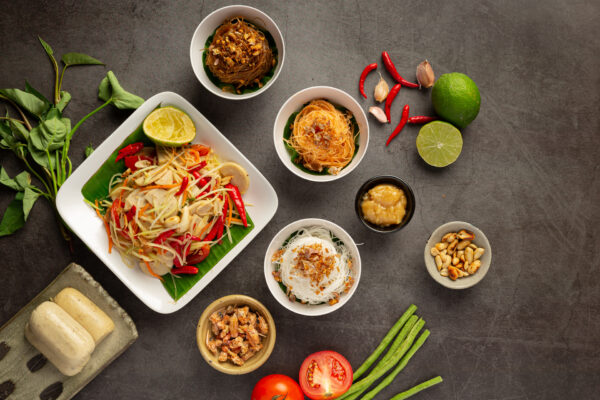
Must-Try Dishes in Thai Street Food
When diving into the world of Thai street food, some dishes are absolute must-tries. These aren’t just popular; they’re deeply ingrained in the country’s culture and everyday life. At the top of the list is Pad Thai, a stir-fried noodle dish that has become synonymous with Thai cuisine. Made with rice noodles, eggs, tofu or shrimp, bean sprouts, and a tamarind-based sauce, it is sweet, sour, and savory all at once.
Garnished with peanuts and a wedge of lime, it’s a perfect introduction to Thai flavors. Another essential Thai street food is Som Tum, or green papaya salad. It’s a zesty, spicy, and crunchy salad made with shredded green papaya, tomatoes, green beans, chili, lime, fish sauce, and peanuts. Each bite delivers a flavor explosion that captures the essence of Thai cuisine.
Grilled meats also dominate the street food scene. Moo Ping, or grilled pork skewers, is a crowd favorite. Marinated in a mix of coconut milk, garlic, cilantro, and soy sauce, then grilled over charcoal, the pork is both juicy and smoky. Gai Yang, or grilled chicken, is another staple that’s often served with sticky rice and a spicy dipping sauce.
Khao Niew Ma Muang, better known as mango sticky rice, is the go-to dessert when exploring the best street food in Thailand. It combines glutinous rice with sweet ripe mango and coconut milk, offering a creamy, sweet, and slightly salty finish to any meal. This dessert not only satisfies your sweet tooth but also showcases the beauty of Thai ingredients.
Thai street food also excels in soups and noodles. Tom Yum Goong is a hot and sour shrimp soup that’s rich in lemongrass, kaffir lime leaves, galangal, and chili. It’s aromatic, spicy, and invigorating. Boat noodles, or Kuay Teow Reua, are small bowls of deeply flavored beef or pork broth served with noodles, meat, and herbs—originally served from boats in Bangkok’s canals.
Another dish you shouldn’t miss is Pad Kra Pao, a spicy basil stir-fry usually served with minced pork or chicken and topped with a fried egg. Its balance of heat, sweetness, and savory depth makes it one of the best street food dishes in Thailand.
Don’t forget the snacks and sides, like spring rolls, Thai fish cakes, and crispy pork belly. Each item contributes to the colorful and diverse mosaic that is Thai street food. Whether you’re wandering through night markets or exploring roadside stalls, tasting these dishes will give you a true sense of the country’s culinary heartbeat.
Remember, the best street food in Thailand isn’t necessarily found in fancy restaurants but in the humble, unassuming stalls run by passionate cooks with generations of knowledge. These must-try dishes are your ticket to experiencing the full spectrum of Thai street food in its most authentic form.
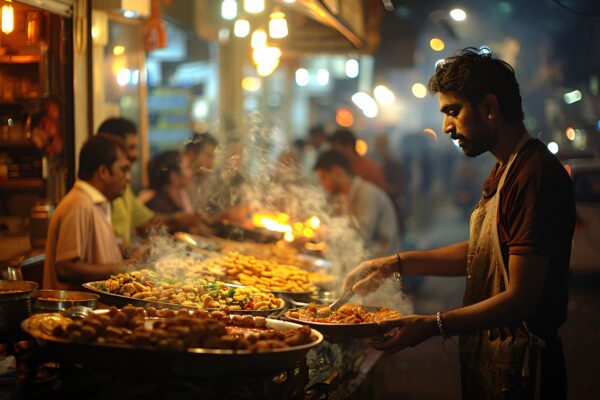
Top Places to Enjoy Thai Street Food Across Thailand
Exploring Thai street food isn’t just about what you eat—it’s also about where you eat it. Across Thailand, cities and regions offer distinct culinary landscapes, each with its own local flavors, ingredients, and techniques. Bangkok, the bustling capital, is arguably the heart of the Thai street food scene. Here, you can find everything from Michelin-recognized stalls like Jay Fai, known for her fiery wok-fried seafood dishes, to roadside vendors selling succulent satay, savory noodle soups, and spicy salads.
Bangkok’s famous street food spots include Yaowarat Road in Chinatown, where the aroma of sizzling garlic fills the air, and the iconic Ratchawat Market where grilled meats and noodle bowls shine. These areas provide some of the best street food in Thailand, blending time-honored cooking methods with modern flair.
Chiang Mai, in northern Thailand, offers a completely different street food experience. The flavors here are often more herbal and milder than those in the central or southern regions. Local favorites include Khao Soi, a rich and creamy curry noodle soup topped with crispy noodles, and Sai Ua, a northern Thai sausage packed with lemongrass, kaffir lime, and chilies.
The city’s night markets, especially the Chiang Mai Night Bazaar and the Sunday Walking Street Market, are ideal for tasting regional specialties while soaking up the laid-back northern vibe. Street vendors in Chiang Mai are known for their warm hospitality and creativity, often putting unique spins on traditional Thai street food.
Down south, cities like Phuket and Hat Yai boast street food with strong Malaysian and Chinese influences. Expect bolder flavors, more seafood-based dishes, and a love for spices and coconut milk. In Phuket, head to the Old Town Night Market to sample Hokkien noodles, crab curry, and roti.
Hat Yai is famed for its fried chicken, which is typically served with sticky rice and deep-fried shallots. Each bite here tells a story of cultural fusion, making southern Thailand a haven for adventurous eaters. Even on the islands like Koh Samui or Koh Phi Phi, beachfront stalls and night markets offer unforgettable meals with ocean views.
Don’t overlook the lesser-known regions either. Isaan, in northeastern Thailand, is a treasure trove for lovers of bold and fiery flavors. Dishes like Larb (spicy meat salad), Nam Tok (grilled meat salad), and sticky rice dominate the menu. Isaan cuisine represents some of the best street food in Thailand, often accompanied by grilled chicken and served in simple but vibrant roadside setups.
The emphasis on freshness and spice makes it an experience worth seeking out. Whether you’re in a bustling metropolis or a quiet rural town, Thai street food is never far away. Each region adds its signature to the culinary canvas, ensuring that your foodie adventure across Thailand is as diverse as it is delicious.
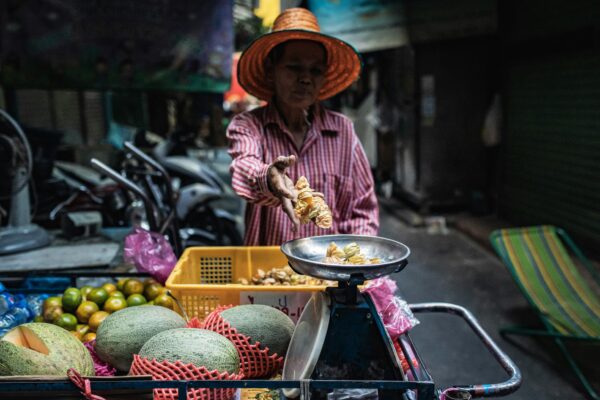
Tips for Eating Thai Street Food Safely and Smartly
Eating Thai street food is an exciting and rewarding experience, but it’s important to approach it with some basic safety tips and cultural awareness. While Thai street food is generally safe and prepared fresh, following a few smart guidelines will help ensure you have an enjoyable and trouble-free culinary adventure. Start by choosing busy stalls that attract a steady stream of locals.
This is usually a good sign that the food is not only delicious but also safe and fresh. Popular vendors typically have high turnover, meaning ingredients don’t sit out for long. Observing how food is handled and cooked is also wise—look for vendors who prepare dishes on the spot rather than reheating premade items. Clean workspaces, covered ingredients, and the use of gloves or utensils are positive indicators.
Hydration and food temperature also matter when navigating Thai street food. Since many dishes are spicy and Thailand is often hot and humid, staying hydrated is crucial. Always carry a bottle of water and avoid drinks with ice unless you’re confident it’s made with purified water.
Likewise, opt for hot dishes that are cooked in front of you. Soups, stir-fries, and grilled meats are usually safe bets because high heat kills bacteria. If you’re unsure about a dish’s freshness, it’s okay to politely skip it. Trust your instincts—if something smells or looks off, move on. Food safety is important, but don’t let it deter you from enjoying the incredible flavors Thai street food has to offer.
Understanding spice levels is also part of eating Thai street food smartly. Thai cuisine can be very spicy, and what’s considered mild for locals might be too intense for visitors. If you’re sensitive to heat, learn a few Thai phrases like “mai phet” (not spicy) or “phet nit noi” (a little spicy).
Most vendors are happy to accommodate. Bringing antacids or digestive aids is a good precaution, especially if you’re sampling a variety of unfamiliar dishes. Another smart tip is to go slow—don’t try to eat everything in one day. Thai street food is incredibly diverse, and spreading your food adventures over several days allows you to savor and appreciate each experience.
Lastly, don’t forget about hygiene. Carry hand sanitizer or wet wipes, as not all stalls have handwashing facilities. Wear light clothing and comfortable shoes because exploring street food scenes often involves a lot of walking and standing.
And always have some small cash on hand, as most vendors don’t accept cards. With these tips, you can confidently dive into the world of Thai street food, knowing you’re making informed and safe choices. The best street food in Thailand is waiting for you in markets, alleyways, and roadside carts—it’s a journey worth savoring, one bite at a time.
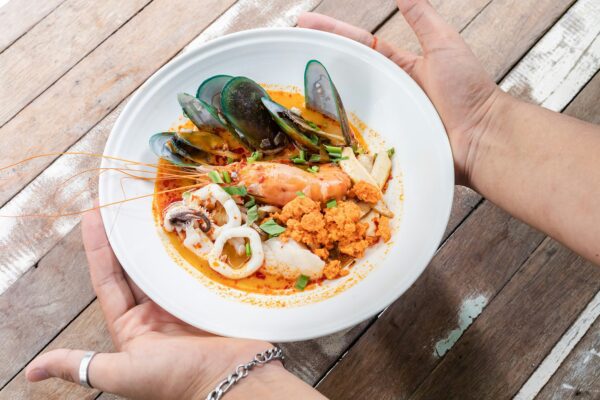
The Culture and Community Behind Thai Street Food
Thai street food is much more than just a collection of delicious dishes; it represents a deeply rooted culture and community way of life. In cities and villages across Thailand, street food vendors are integral to daily routines and neighborhood dynamics.
These humble stalls are often family-run businesses passed down through generations, embodying culinary traditions and values that have been preserved and perfected over decades. The preparation and sharing of Thai street food is a cultural ritual, where recipes are guarded like heirlooms and every dish has a story. From a busy Bangkok street corner to a quiet countryside market, street food in Thailand brings people together, nourishing not just bodies but relationships and memories.
One of the key aspects of Thai street food culture is its accessibility. Thai people from all walks of life—students, workers, professionals, and retirees—regularly eat from street vendors. The food is not only affordable but freshly prepared and deeply flavorful, making it a practical and popular option. For many Thais, street food is an extension of their home kitchen.
Whether grabbing a quick bowl of noodles, a skewer of grilled pork, or a refreshing dessert, it’s part of their daily rhythm. Vendors become local celebrities, recognized for their unique recipes or friendly service, and loyal customers return day after day. This familiarity and personal connection form the backbone of the Thai street food experience, turning it into a communal activity rather than just a transaction.
Street food also reflects Thailand’s regional diversity. Each part of the country offers a different flavor palette influenced by local geography, history, and cultural influences. In the north, you’ll find earthy herbs and mild spices, while the south is known for rich coconut-based curries and fiery chilies.
The central plains offer balanced and aromatic dishes, and the northeastern Isaan region brings bold, tangy flavors to the table. Vendors often bring their hometown recipes with them when they move to larger cities, contributing to the melting pot of culinary options available on urban streets. This regional pride is evident in the careful preparation and passionate service found at each stall, allowing visitors to taste the full spectrum of Thai street food culture in a single market.
Moreover, Thai street food markets serve as vibrant social hubs. They are not just places to eat—they are where people meet, chat, and share stories. In the evenings, markets come alive with laughter, music, and sizzling sounds from the woks. Families, friends, and travelers gather to enjoy affordable meals and good company.
These spaces offer an authentic glimpse into Thai life and values: hospitality, simplicity, and celebration of flavor. Vendors often greet you with a warm smile, eager to explain their dish or help you pick something based on your taste. This welcoming atmosphere is one reason why so many travelers fall in love with Thai street food—it’s an invitation into the heart of the culture.
Even amidst modernization and global influences, Thai street food remains resilient and adaptive. Many younger entrepreneurs are reimagining traditional recipes with modern twists, eco-friendly packaging, or health-conscious ingredients, all while respecting the roots of their cuisine.
Street food festivals, pop-up night markets, and online ordering platforms are helping traditional vendors reach a wider audience. Despite these changes, the essence remains the same: authentic, homemade meals crafted with love and skill, served in a casual, friendly environment. These evolutions reflect the strength of the Thai street food community—it thrives on innovation but honors tradition.
For travelers, experiencing the culture and community behind Thai street food is as important as tasting the food itself. By sitting down at a plastic stool in a crowded night market or watching a vendor expertly toss noodles in a hot wok, you’re participating in a living tradition.
You’re witnessing the rhythm of Thai daily life and getting a front-row seat to the country’s soul. Learning a few Thai phrases, showing appreciation for the food, and supporting small vendors are all ways to connect more deeply with this community. And when you return home, the memories of these street-side meals will likely remain among the most vivid of your travel experiences.
Ultimately, Thai street food is a reflection of Thailand itself—warm, diverse, lively, and full of flavor. It’s a culinary tapestry woven from history, family, and community. And it’s one of the best ways to understand and appreciate the country’s unique cultural identity. The next time you visit Thailand, don’t just eat—observe, engage, and celebrate the people and stories behind each plate. That’s where the true magic of Thai street food lives.
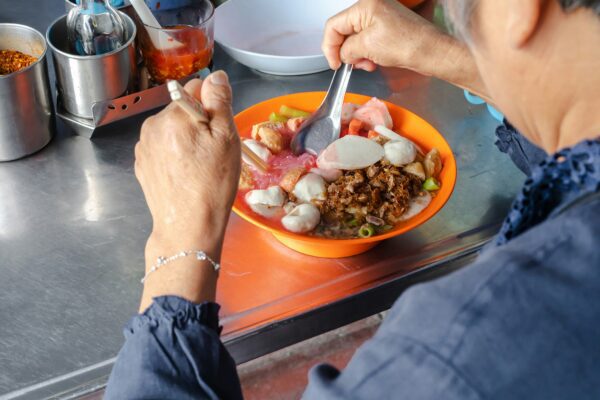
How Thai Street Food Influences Global Cuisine
Thai street food has grown far beyond the vibrant markets of Bangkok, Chiang Mai, and Phuket—it has become a global phenomenon influencing food culture in cities across the world. From food trucks in Los Angeles to trendy cafes in London and night markets in Melbourne, the bold flavors, unique ingredients, and diverse cooking techniques of Thai street food are being adopted and reimagined by chefs and food lovers everywhere.
The appeal lies not only in the complexity of the flavors but also in the accessibility and versatility of the cuisine. With dishes that range from fiery and sour to sweet and tangy, Thai street food offers something to suit every palate, making it a favorite inspiration for modern fusion cooking.
One of the most notable contributions Thai street food has made to the global culinary scene is its balance of flavors—sweet, sour, salty, spicy, and umami—which form the foundation of its dishes. This principle of harmony is now a staple concept in many fusion kitchens, guiding chefs to craft dishes that are exciting and layered in taste.
Thai ingredients such as lemongrass, kaffir lime leaves, galangal, Thai basil, and fish sauce have found a permanent place in pantries worldwide. Restaurants far beyond Thailand are serving their versions of Pad Thai, Tom Yum soup, Som Tum (green papaya salad), and mango sticky rice, a testament to the enduring popularity of Thai street food on the global stage.
Beyond the dishes themselves, Thai street food has influenced how people eat and interact with food. The concept of small plates, shared meals, and quick service has become more common in many urban food settings. Pop-up food stalls, food halls, and night markets—many modeled on the Thai street food experience—are thriving in cities like New York, Toronto, Berlin, and Sydney.
These spaces embrace the casual, communal atmosphere that is such a key part of Thailand’s street food culture. They offer a lively alternative to traditional restaurants, where diners can sample a variety of flavors in a single outing. It’s a format that encourages culinary exploration and social interaction, reflecting the essence of Thai street food.
In addition, Thai chefs and restaurateurs abroad are increasingly gaining recognition for bringing authentic Thai flavors to international audiences. Some have built culinary empires based on the humble street food traditions of their homeland, earning Michelin stars and global acclaim in the process. These chefs often blend traditional Thai techniques with local ingredients, creating dishes that stay true to Thai street food roots while appealing to new audiences.
Their work not only introduces more people to the best street food in Thailand, but also elevates the perception of street food from everyday fare to gourmet cuisine. Through cooking classes, television shows, food blogs, and YouTube channels, they educate and inspire people worldwide to appreciate the depth and diversity of Thai cuisine.
Moreover, the influence of Thai street food can be seen in culinary innovation and food trends. The rise of spicy, fermented, and fermented-sweet flavor profiles owes much to Thai dishes like nam prik (chili dips), fermented sausages, and sour curry. Thai-style bubble teas, spicy noodle bowls, and fusion tacos with Thai fillings are increasingly popular, blending the street food tradition with contemporary tastes.
Even in vegetarian and vegan circles, Thai street food has made waves—thanks to coconut-based curries, tofu stir-fries, and the use of fresh herbs and vegetables, which offer satisfying plant-based alternatives without compromising on flavor. The adaptability of Thai street food makes it a favorite template for innovation.
Importantly, this global appreciation has sparked greater interest in traveling to Thailand to experience the real thing. Food tourism is a major draw for the country, with many visitors crafting entire itineraries around food experiences—from cooking classes and street food tours to regional food festivals.
For many, the journey to taste Thai street food at its source becomes a transformative experience, deepening their understanding of Thai culture and cuisine. This, in turn, fosters respect and admiration for the culinary traditions that continue to influence the way people eat all over the world.
In conclusion, the global rise of Thai street food is more than a culinary trend—it’s a cultural exchange that brings people together through the universal language of food. Its influence is visible in the way we cook, eat, and enjoy meals in many parts of the world. And as more people fall in love with the vibrant, layered flavors of Thai street food, its impact on global cuisine will only continue to grow. So whether you’re enjoying a steaming bowl of noodles at a Bangkok market or tasting a Thai-inspired dish at a fusion bistro in Paris, you’re participating in a worldwide celebration of one of the most beloved food traditions in the world.
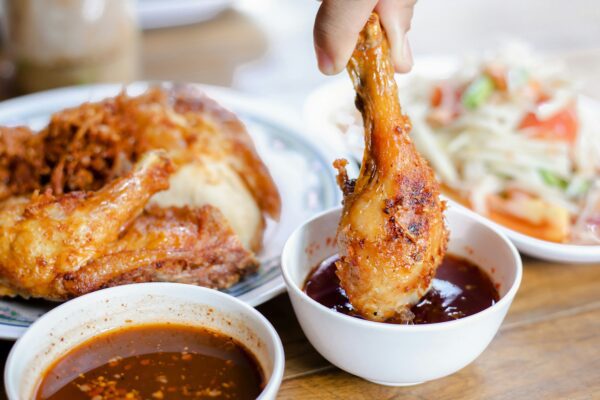
Street Food Etiquette and Cultural Tips for Travelers in Thailand
Experiencing Thai street food is about more than just delicious dishes—it’s a cultural journey, and understanding the local etiquette can significantly enhance your experience. Street food in Thailand reflects centuries of tradition and community values, and showing respect for these customs can lead to deeper connections with locals and a more enjoyable adventure.
Whether you’re grabbing a quick bite in Bangkok or exploring night markets in Chiang Mai, knowing how to interact, order, and eat like a local will help you navigate the vibrant world of Thai street food with confidence.
First and foremost, a warm attitude and a smile go a long way in Thailand. The country is known as the “Land of Smiles,” and kindness is an important part of daily interactions, especially in food settings. When approaching a street food vendor, it’s courteous to smile, greet them with a polite “Sawasdee krub/ka” (hello) depending on your gender, and thank them with “Khop khun krub/ka.” Even if you don’t speak Thai fluently, these simple phrases are appreciated and show respect for the culture. It’s also helpful to observe locals and mimic their behavior—this is the easiest way to pick up unwritten rules about where to stand, how to order, and how to eat.
When it comes to ordering, pointing at ingredients or using visuals on a menu is totally acceptable if language is a barrier. Many vendors understand basic English or food-related terms, and some even have pictures on display. If you have dietary restrictions, try learning a few essential phrases in Thai, such as “mai sai nam pla” (no fish sauce) or “chan kin jeh” (I eat vegetarian). Be patient and polite—street vendors are often incredibly busy and may be managing everything from cooking to payments themselves. If a vendor is popular, it’s okay to wait quietly in line. Pushing or trying to rush your order is considered impolite.
A key part of Thai street food etiquette is understanding how meals are eaten in public settings. While some vendors offer plastic chairs and tables, many street food meals are eaten standing or on-the-go. Thai cuisine is generally eaten with a fork and spoon—the spoon goes in your right hand and is used to bring food to your mouth, while the fork helps push food onto the spoon.
Chopsticks are typically reserved for noodle soups. It’s uncommon to eat directly with your hands unless you’re eating sticky rice in the northern or northeastern style, in which case using your hands is perfectly acceptable. If utensils are offered, use them, and avoid sticking chopsticks upright in food, especially rice, as it resembles funeral rituals.
Another cultural tip: Thais value cleanliness even in informal settings, and you’ll often see vendors keeping their stalls spotless. As a customer, it’s respectful to dispose of your trash properly. If you eat at a vendor’s table, try not to leave a mess. Finishing your plate is also a sign of appreciation. While tipping isn’t required, it’s always welcome. If the food and service are especially good, rounding up your bill or leaving small change is a nice gesture. Don’t haggle over food prices—street food is already very affordable, and negotiating is considered rude in this context.
When exploring different street food markets, dress modestly, especially in areas near temples or traditional neighborhoods. Thailand is a country where personal appearance and public manners matter. Wearing casual but clean clothing shows respect. Also, be mindful when taking photos. While it’s tempting to capture every colorful dish and bustling scene, always ask for permission if you’re photographing a vendor or their setup. Most are proud of their work and happy to be featured, but courtesy goes a long way.
Another important aspect of Thai street food culture is sharing and community. Meals are often enjoyed with friends or family, and dishes are shared among the group. If you’re dining with others, follow suit—order a variety of items and try a bit of everything. This not only allows you to taste more dishes but also aligns with the communal spirit of Thai eating culture. If you’re traveling solo, joining a food tour can provide that group dining experience and introduce you to popular stalls you might not discover on your own.
Finally, take your time to savor the experience. Thai street food isn’t just about feeding your stomach—it’s about immersing yourself in a way of life. Every dish tells a story, from the vendor’s personal background to regional specialties rooted in history. Be curious, ask questions if you can, and try something new. The more open and respectful you are, the richer your journey through Thai street food will be.
Frequently Asked Questions
What is Thai street food?
Thai street food refers to the wide variety of ready-to-eat meals, snacks, and beverages sold by vendors at roadside stalls, markets, or mobile carts throughout Thailand. It’s a major part of everyday Thai life and culture, known for its affordability, flavor, and freshness.
Where can I find the best street food in Thailand?
Some of the best places to find street food in Thailand include Bangkok’s Yaowarat (Chinatown), Chiang Mai’s Sunday Night Market, Phuket Old Town, and Hat Yai’s local markets. Each region offers its own specialties and culinary traditions.
Is Thai street food safe to eat?
Yes, Thai street food is generally safe, especially if you choose busy stalls with high turnover, fresh ingredients, and clean preparation practices. Watching food being cooked fresh and served hot is also a good safety measure.
What are some must-try Thai street food dishes?
Must-try dishes include Pad Thai, Som Tum (papaya salad), Moo Ping (grilled pork skewers), Khao Niew Ma Muang (mango sticky rice), Tom Yum Goong (spicy shrimp soup), and Khao Soi (curry noodle soup), among many others.
How much does Thai street food typically cost?
Thai street food is very affordable. Most dishes cost between 30 to 100 Thai Baht (around $1 to $3 USD), depending on the ingredients and location. Even in tourist areas, it’s easy to eat well on a budget.
What time is best for exploring Thai street food?
Street food is available all day, but the best time to explore is usually in the evenings, especially at night markets and food streets. Vendors tend to set up shop late afternoon and stay open until late at night.
Can I find vegetarian or vegan Thai street food?
Yes, vegetarian and even vegan Thai street food is available, though it may require some extra effort. Look for stalls labeled “เจ” (jay), which indicates vegetarian food. Dishes like Pad Thai Jay or fried tofu are common options.
Do Thai street food vendors accept credit cards?
Most street food vendors in Thailand operate on a cash-only basis. It’s best to carry small denominations of Thai Baht when eating at street food stalls. Some markets in tourist areas may accept QR codes or mobile payments.
How do I ask for less spicy food in Thailand?
To ask for less spicy food, you can say “mai phet” which means “not spicy,” or “phet nit noi” which means “a little spicy.” Vendors are generally accommodating if you communicate your spice tolerance.
Is tipping expected at Thai street food stalls?
Tipping is not expected but always appreciated. You can round up the bill or leave small change as a thank you for great service or delicious food. Vendors will be grateful, but there is no obligation.



